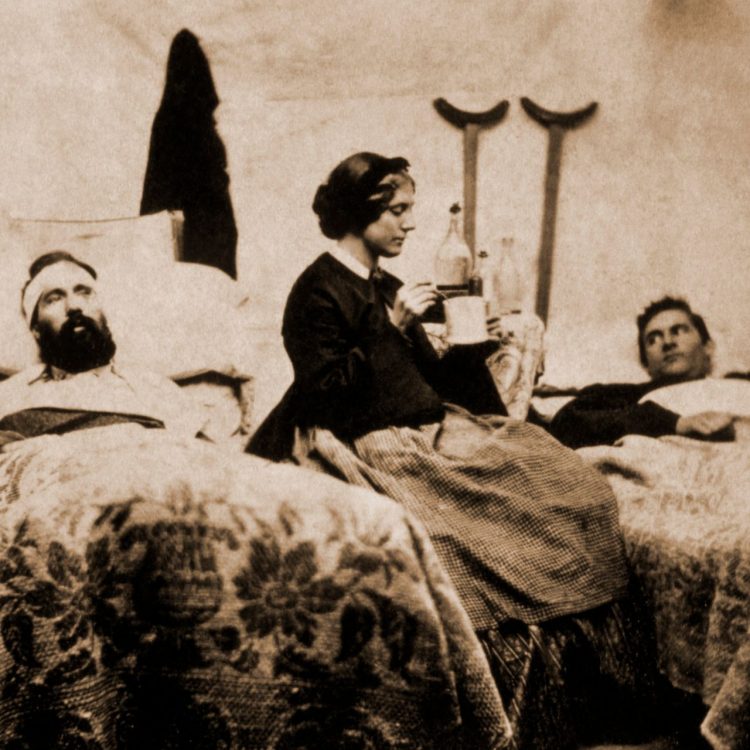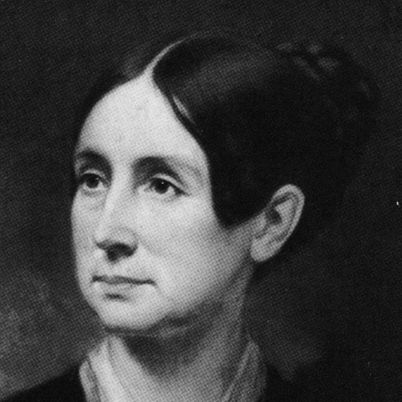Civil War Nurse from Ohio Elizabeth Mendenhall was one of the managers of the Soldiers Aid Society of Cincinnati, Ohio, which was financed mainly by monetary gifts from private citizens. When donations slowed to a trickle, Mendenhall helped organize a sanitary fair in 1863 to raise funds to care for the soldiers. Image: Soldiers Aid Society like the one established by Elizabeth Mendenhall Elizabeth (maiden name unknown) was born in Philadelphia in 1819, but her childhood and youth were spent in Richmond, Virginia, at the home of her sister, her only close relative. Her relatives belonged to the Society of Friends (Quakers), who were also abolitionists, and she grew up with a strong dislike of slavery. After her marrige in…
Category: Civil War Nurses
Civil War Nurses
Civil War Nurses on Hospital Ships
Nurses on Hospital Ships in the Eastern Theater Image: Sisters Georgeanna Woolsey and Eliza Woolsey Howland Served on hospital ships during the Peninsula Campaign in Virginia (March-July 1862) During the Civil War, the Union Army often used ships to move sick and wounded soldiers from Southern battlefields to general hospitals in Northern cities. Initially, government-run hospital transport ships performed poorly. The need for improvement was especially demonstrated during the Peninsula Campaign when well-run volunteer hospital transport ships assisted the government ships to evacuate patients. The Peninsula Campaign was a major Union operation in southeastern Virginia that lasted from March through July 1862. The plan was to travel up the Virginia peninsula by land and by river and capture the Confederate…
Louisa Hawkins Canby
Civil War Nurse and Wife of General E.R.S. Canby Louisa Hawkins Canby, wife of Union General Edward Richard Sprigg (E.R.S.) Canby, was named the Angel of Santa Fe for her compassion toward the cold and wounded Confederate soldiers who occupied Santa Fe, New Mexico in 1862. She not only nursed the Rebel troops, but also showed them the location of the blankets and food her husband had ordered to be hidden before he and the Union troops left the city. Image: Louisa Hawkins Canby Early Years Louisa Hawkins, was born December 25, 1818 at Paris, Kentucky to John and Elizabeth (Waller) Hawkins. Relatives and close friends always called her Lou. Raised in Crawfordsville, Indiana, at age 19 Lou met the…
Sally Tompkins
Civil War Nurse and Hospital Administrator Captain Sally Tompkins was a Civil War nurse, humanitarian and philanthropist who founded a Confederate hospital in Richmond, Virginia. During the war she cared for 1,333 Confederate soldiers in her hospital with only 73 deaths – the lowest mortality rate of any military hospital – establishing the remarkable record of returning 94% of them to service. Image: Sally Tompkins Stained Glass Window St. James Episcopal Church Richmond, Virginia Depicts Tompkins with her medical bag around her waist and a Bible in her hand with the Angel of Mercy to guide her. Above the center panel is a picture of the Robertson Hospital, and below are scenes depicting Captain Tompkins caring for wounded soldiers. Early…
Jane Currie Blaikie Hoge
Civil War Nurse and Relief Worker Jane Currie Blaikie Hoge was a Civil War nurse, sanitary reformer and relief worker who is best remembered for her impressive organizational skills in providing medical supplies and other items to Union soldiers during the Civil War. After seeing some of the deplorable conditions suffered by the troops, Hoge became a leader in sanitary reform, which included activities such as collecting and distributing food, clothing, and medical and hospital supplies. She was also active in recruiting nurses for the army. Early Years Jane Currie Blaikie was born on July 31, 1811 in Philadelphia, Pennsylvania, the daughter of George Blaikie, a wealthy merchant, and Mary Monroe Blaikie. Jane was educated at the Young Ladies’ College,…
Diaries of Civil War Nurses
Volunteer Nurses: Forgotten Heroes of the Civil War At the beginning of the war, women in all walks of life saw the need for nurses and simply showed up at military hospitals. A few of the more famous nurses kept a written record of their experiences, including Hannah Ropes, Jane Stuart Woolsey, Kate Cumming and Katharine Prescott Wormeley. Some are merely names on lists in dusty government archives; others we will never know. Backstory In April 1861, Dorothea Dix and a hastily assembled group of volunteer female nurses staged a march on Washington, demanding that the government recognize their desire to aid the Union’s wounded. Secretary of War Simon Cameron quickly named Dix to superintend the women nurses assigned to…
Gettysburg Nurses
Gettysburg’s Own Angels of the Battlefield The importance of the humanitarian effort voluntarily undertaken by the women of Gettysburg to the thousands of men who lay searing in the July sun cannot be overstated. They dedicated themselves to the care of the wounded from both armies beginning in the mid morning hours of July 1, 1863, long before military medical personnel arrived. Backstory Throughout the month of June 1863 there had been repeated alarms in Gettysburg: “The Rebels are coming.” Suddenly on Friday June 26 a contingent of General Robert E. Lee‘s army galloped up Chambersburg Street firing their pistols into the air while citizens scrambled to the safety of their homes. They plundered and ate everything within their reach…

Clara Barton in the Civil War
Civil War Nurse and Humanitarian Most people remember Clara Barton as the founder of the American Red Cross and an independent Civil War nurse. During the war she maintained a home in Washington, DC, but traveled with the Union Army, providing care and relief services to the wounded on many battlefields. The significance of the work she performed during and immediately after the war cannot be overstated. Patent Office Clerk Born in Massachusetts in 1821, Clara Barton moved to Washington, DC in 1854. There she worked as a clerk in the U. S. Patent Office from 1854 to 1857, the first woman to receive a substantial clerkship in the federal government. Her $1,400 annual salary was the same as that…
Carrie McGavock
Civil War Nurse at the Battle of Franklin Carrie McGavock’s plantation home, Carnton, on the outskirts of Franklin, Tennessee, was used as a hospital after the Battle of Franklin on November 30, 1864. She not only oversaw the care of the wounded in and around her house, she was responsible for making sure that nearly 1500 Confederates were reinterred in a cemetery on the McGavock property. Carrie Winder and John McGavock were married in December 1848. They had five children during the subsequent years, three of whom died at young ages: Martha, Mary Elizabeth and John Randal. The surviving children, Winder (1857-1907) and Hattie (1855-1932), witnessed the carnage at their home. Carnton Plantation The first construction on the property took…

Dorothea Dix
Educator, Social Reformer and Humanitarian Dorothea Dix (1802–1887) was a social reformer, primarily for the treatment of the mentally ill, and the most visible humanitarian of the 19th century. Through a long and vigorous program of lobbying state legislatures and the U.S. Congress, Dix created the first generation of American mental hospitals. During the Civil War, she served as Superintendent of Army Nurses for the Union Army. Dorothea Lynde Dix was born on April 4, 1802 in Hampden, Maine. She was the first child of three born to Mary Bigelow Dix and Joseph Dix, an itinerant Methodist preacher. Her mother suffered from depression and was bedridden during most of Dorothea’s childhood. Her father was an abusive alcoholic. After her mother…